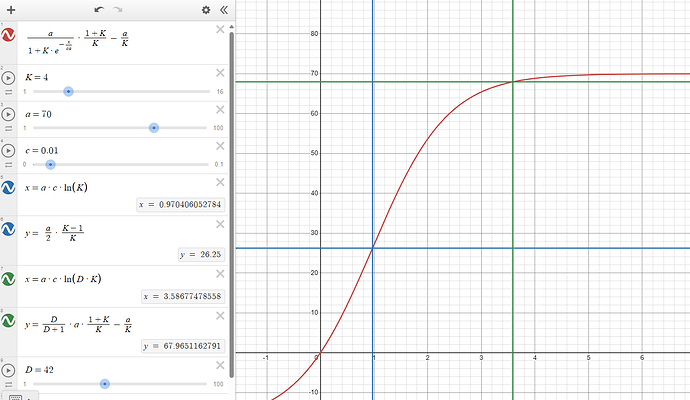With the day/night cycle, there is now some benefit to having a stockpile of glucose - but rather than just having to spam vacuoles, I think it would be more interesting if you could have lipid vesicles to convert excess glucose into lipids, which could then later be converted back into glucose when your glucose is depleted. I know this might seem like just some extra steps, but I think it could add a bit more depth. Thoughts?
It is planned to add to the game a type of general energy store (glucose production from excess ATP), but just for your information, triglyceride is a reserve substance that exists only in animals. In plants, their preservative is starch, but technically it behaves the same.
Don’t forget plant oil.
I know of their existence, but they are used in plants not as a preservative (fat is essential stuff in all known cells, but they have different uses. even we can eat proteins if needed [aka Autophagy]) but as protection against pests or matrix.
(e.g. ether oils used as perfume, plant oils such as oil are for flavor or protection, not as a preservative)
Well, I appreciate the correction about the primary means of energy storage. I changed the name of the thread to better reflect the more general purpose. But there are plants (specifically microalgae) which produce triglyceride as a means of energy storage[1]. Though I suppose a more robust system would allow for both forms of energy storage.
[1]Azide improves triglyceride yield in microalgae - ScienceDirect.
The focus is on how to design differentiation between the two approaches.
Well, in the real world, their differences lie in energy density vs. speed of access, but there is also the dimension of how lipids provide more thermal insulation. But I think focusing on that first part of the equation would be easier to implement and communicate. Particularly if you had the storage just be integrated into the organelle that produces the compound (as is the case in real life for starch & Amyloplasts), then it’s just as simple as making the triglyceride have more storage, but the protien/enzyme that breaks it down does so at a much slower rate.
The most intuitive method is to increase starch and fat (And don’t forget glycogen) as compounds, but this involves the entire metabolic system.
Under the existing framework, starch granules, neutral lipids, and glycogen can serve as specialized storage organelles for glucose.
It is possible to balance storage, osmotic regulation consumption, and quality (currently hidden attributes of organelles).
[How to design to reflect the efficiency difference of their conversion to glucose?]
| storage | quality | osmotic regulation consumption | quality/storage | osmotic regulation consumption/storage | |
|---|---|---|---|---|---|
| glycogen | M | M | L | M | L |
| starch granules | H | H | M | M | M |
| neutral lipids | M | L | M | L | M |
A means of energy storage that would be used up more slowly could be useful in the cell stages, especially if it would also help with regulating temperature - that will become more important when environmental tolerances are added. And fat storage could be important in the creature stages. It might be better to have a single organelle to represent the various forms of this.
I have a scenario in mind to consider the sprint mechanism:
The current rate at which the cell consumes glucose depends only on the rate at which the cell biochemical processes consume glucose.
If we set a maximum consumption rate for cellular glucose, this maximum consumption rate is determined by the current ratio of the total storage size to the number of storage organelle types.
Then there is explosiveness, and the rate of glucose consumption available during the sprint is limited by the maximum consumption rate.
Maximum consumption rate can be made equal to the atp creation rate so that the cell would never run out of atp if it isn’t starving.
How would speed depend on the morphology and atp creation? Twice the flagella makes twice the speed, but if you start sprinting, it doubles again assuming max atp isn’t surpassed?
What is the point in having a 2 tiered speed system? If I can sprint anywhere all the time, why shouldn’t I? And if max speed only depends on max atp, why should I add the second flagella?
Sprinting should spend more energy per distance travelled, so that there would be a reason to not sprint when you don’t have to. And there can be x2 sprint, x3 sprint etc. but having too many wouldn’t be useful.
Here is an idea I had that I didn’t liked and noone else would like either.
Lets remove glucose from the game, and rename all instances of glucose into pruvate acetyl coa, which is the building block of carbonhydates, fats and proteins. And lets call the energy storing molecule polyacetylcoa, which can represent both the starch and the fats. This way we wouldn’t need to have two different energy storing molecules.
If the speed is dynamic, it is controlled based on the consumption of ATP.
Take a variant of the S-shaped curve, where the x-axis represents ATP consumption and the y-axis represents velocity.
So the optimal efficiency speed is at the point where the y/x is maximum, and the speed at this point is used as the cruising speed of the cell.
So sprinting means giving up efficiency for higher speed.
Perhaps this S-shaped curve should be used for input ATP and output power, just like the input fuel power and output mechanical power of an engine?
There are also exercise strategies, I hope I don’t turn on glycolysis when I’m not sprinting.
